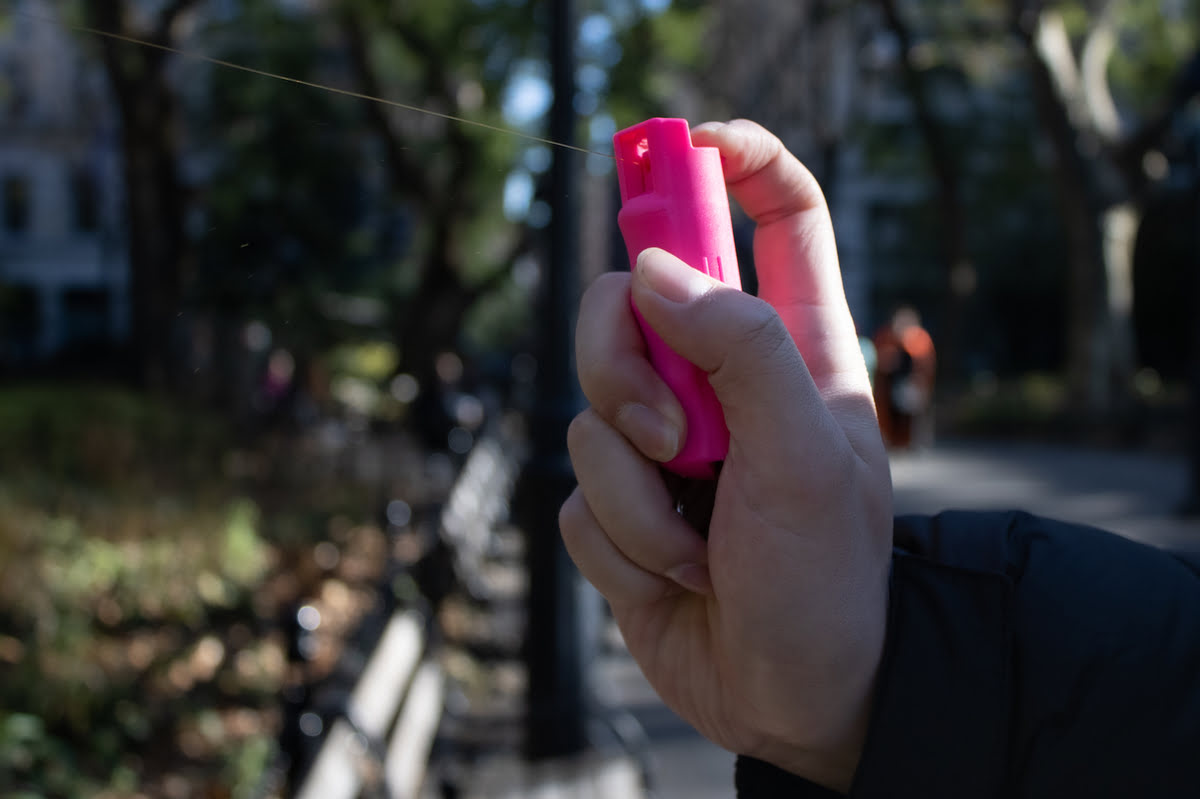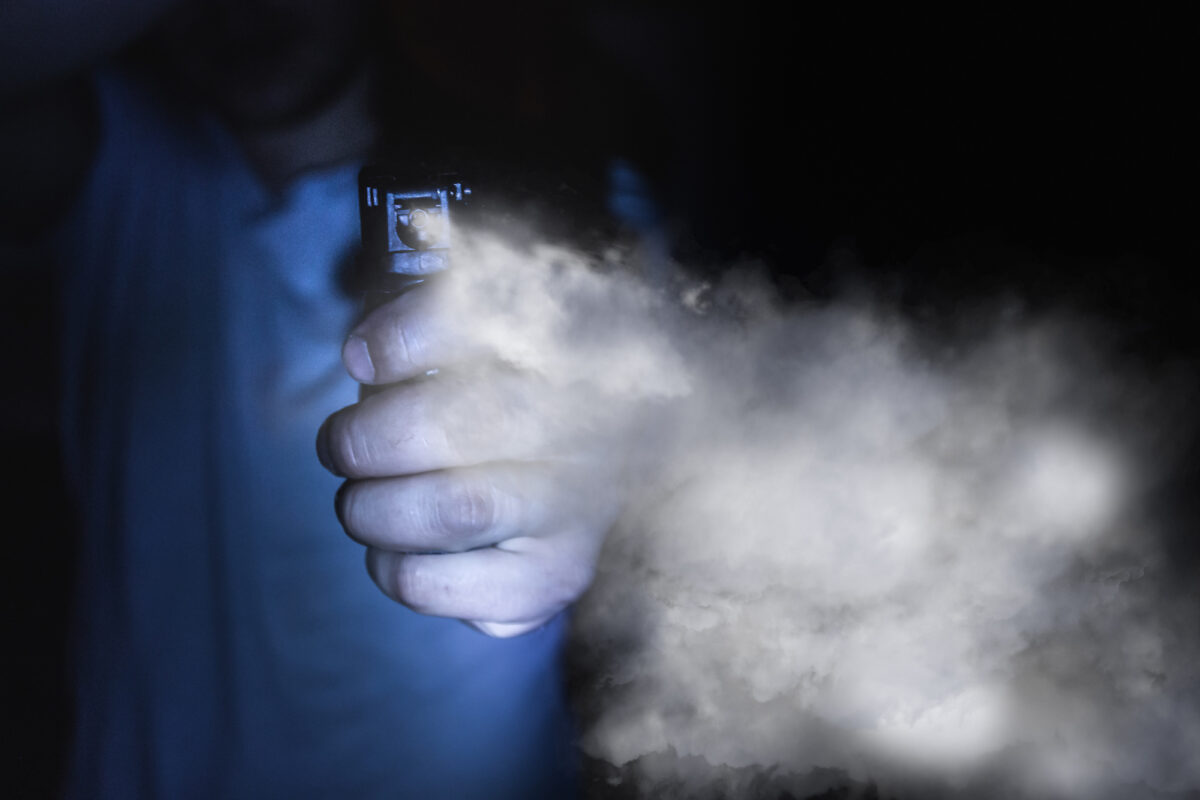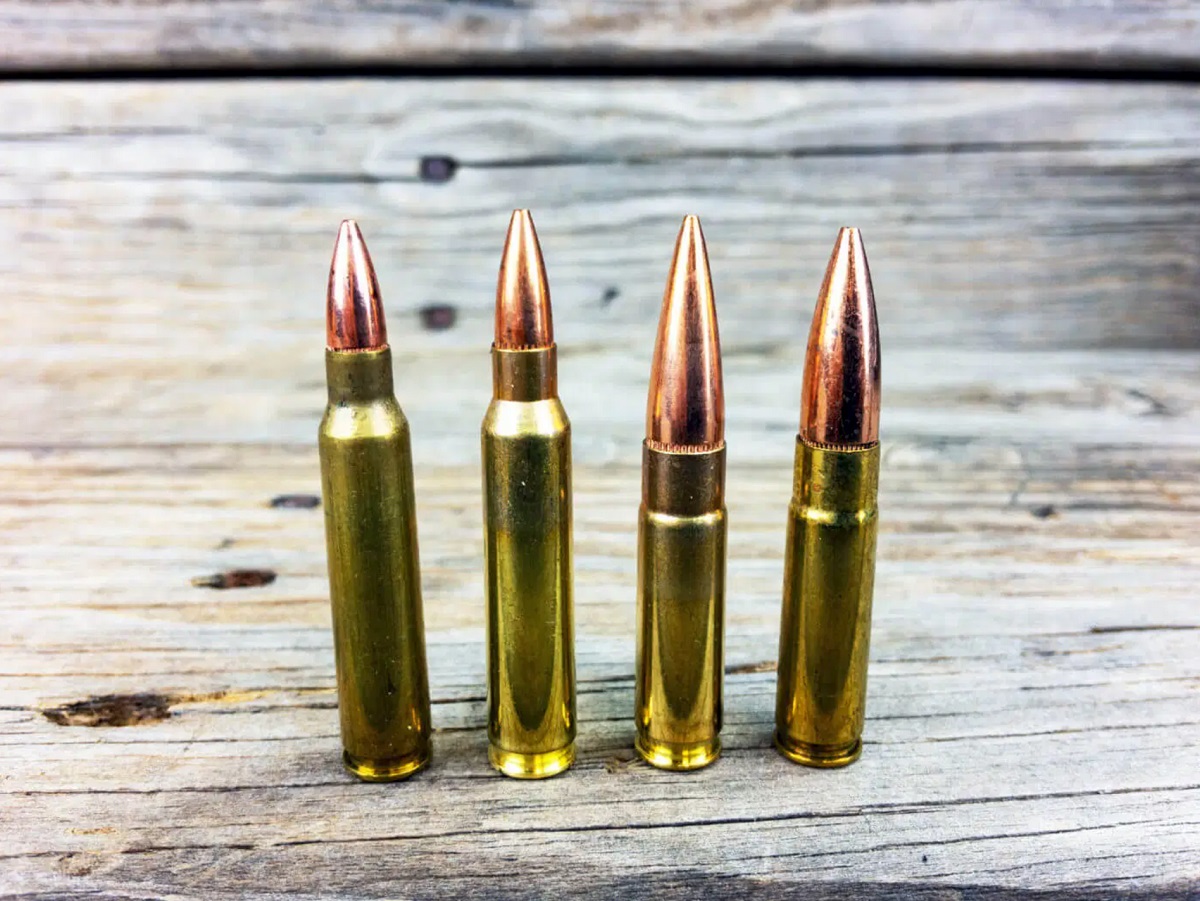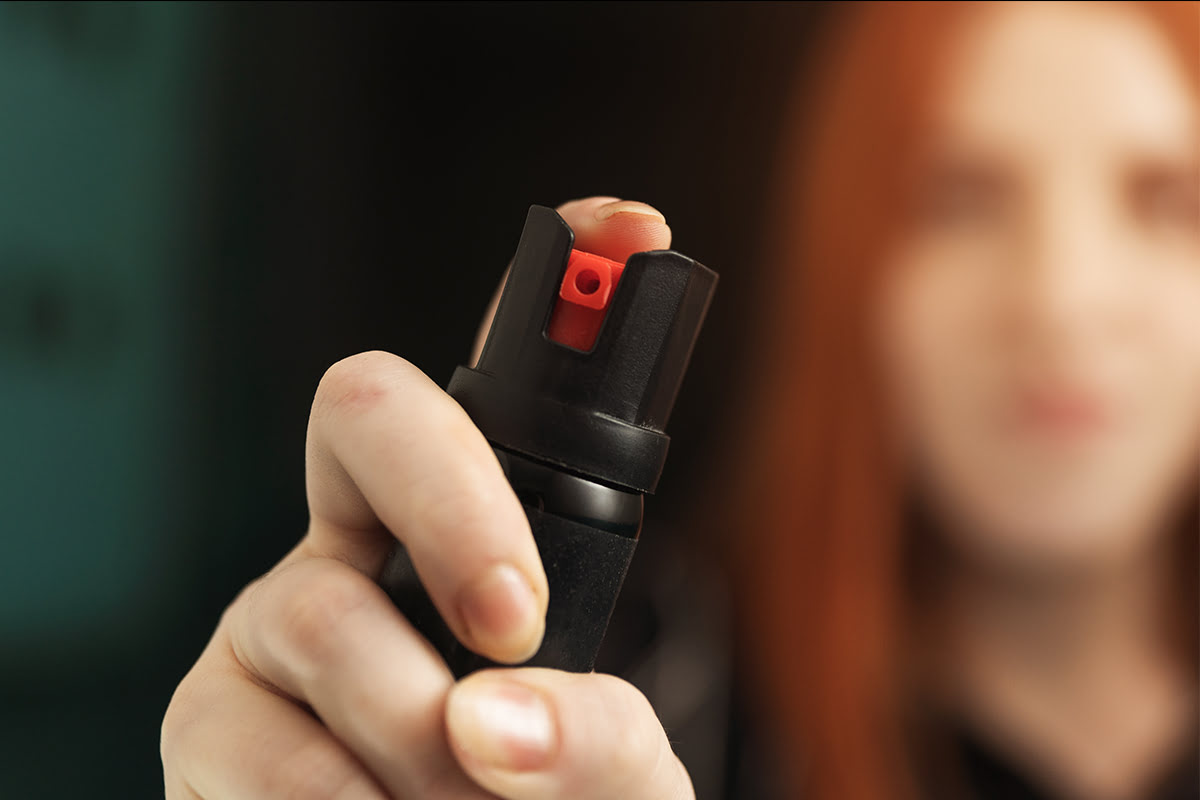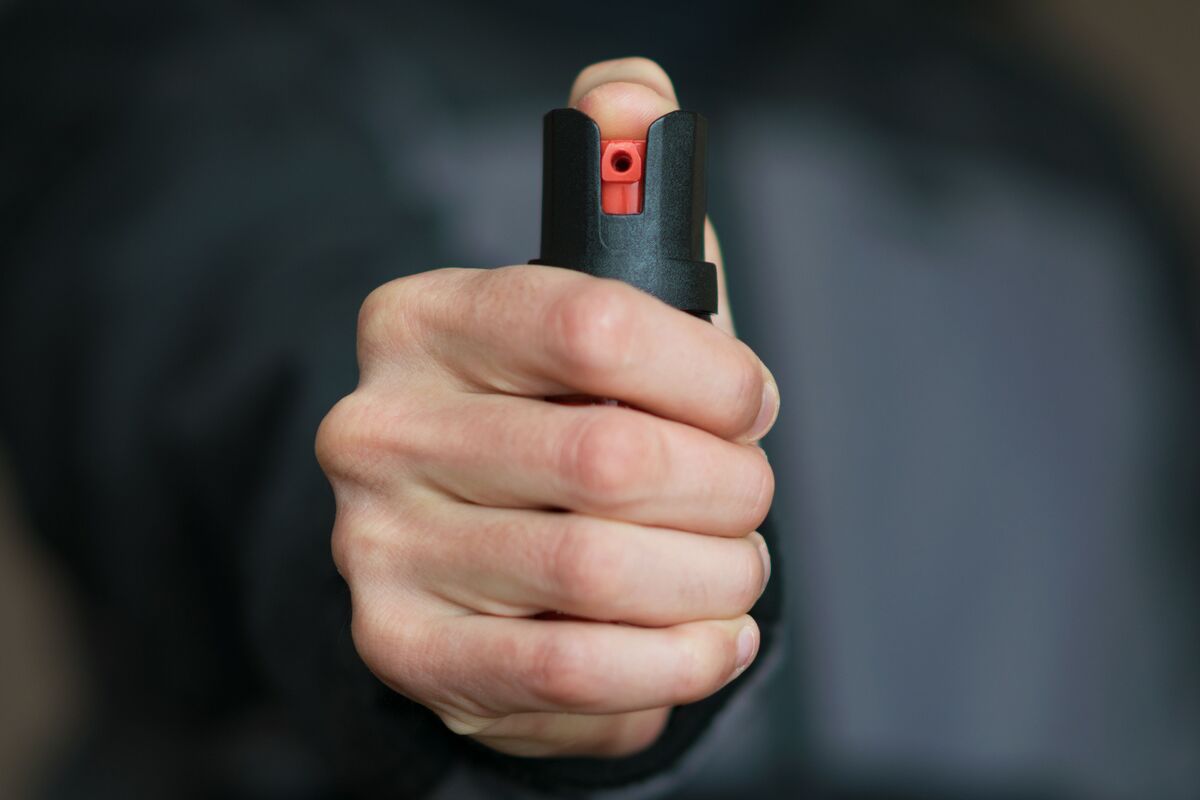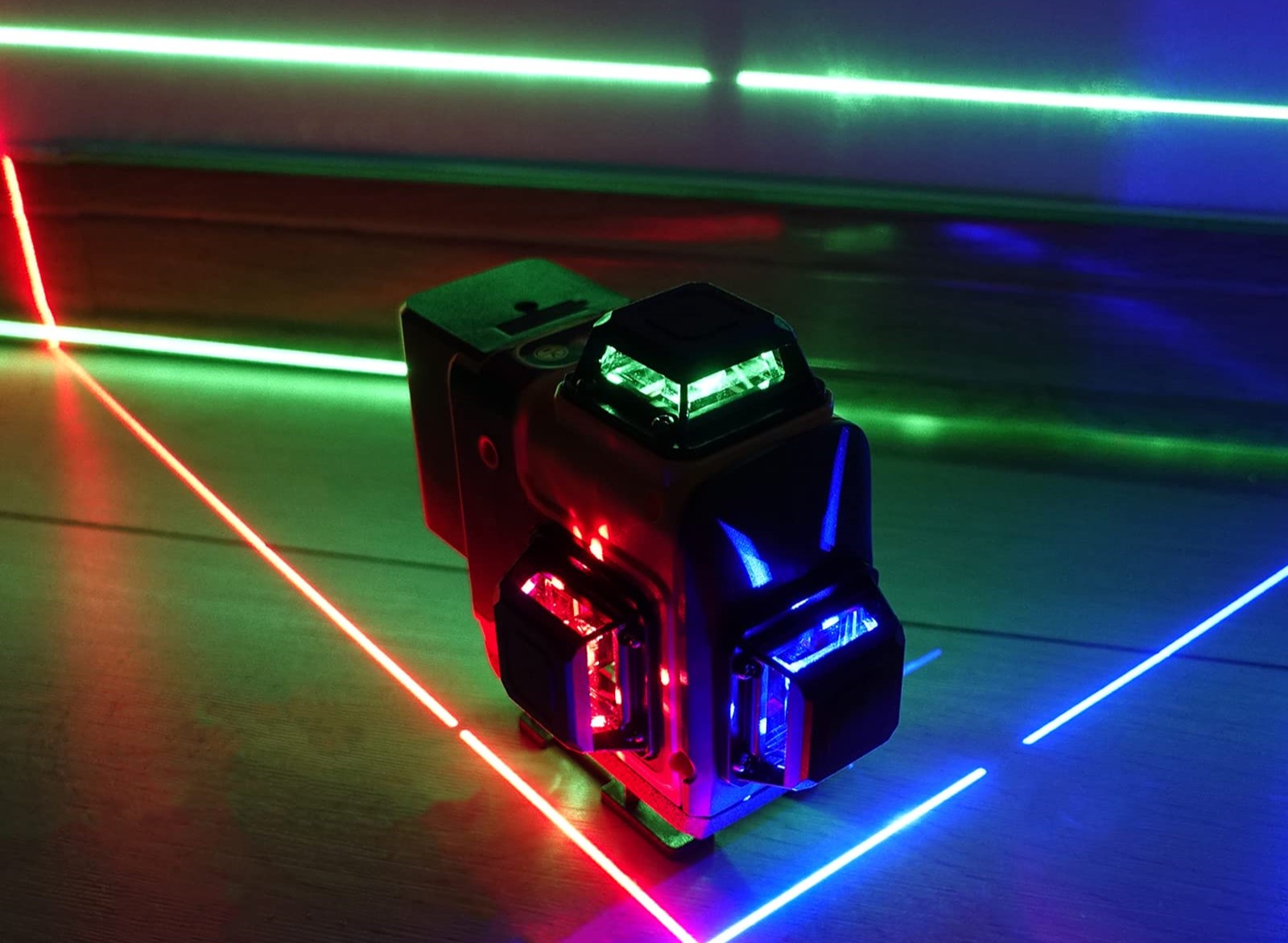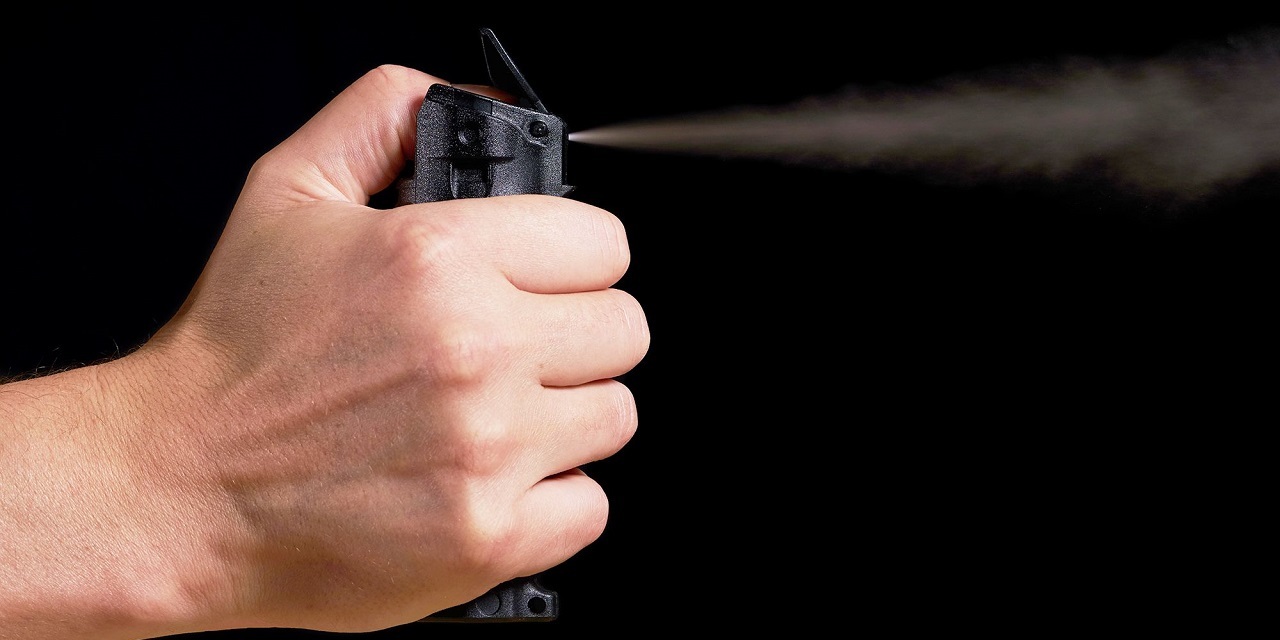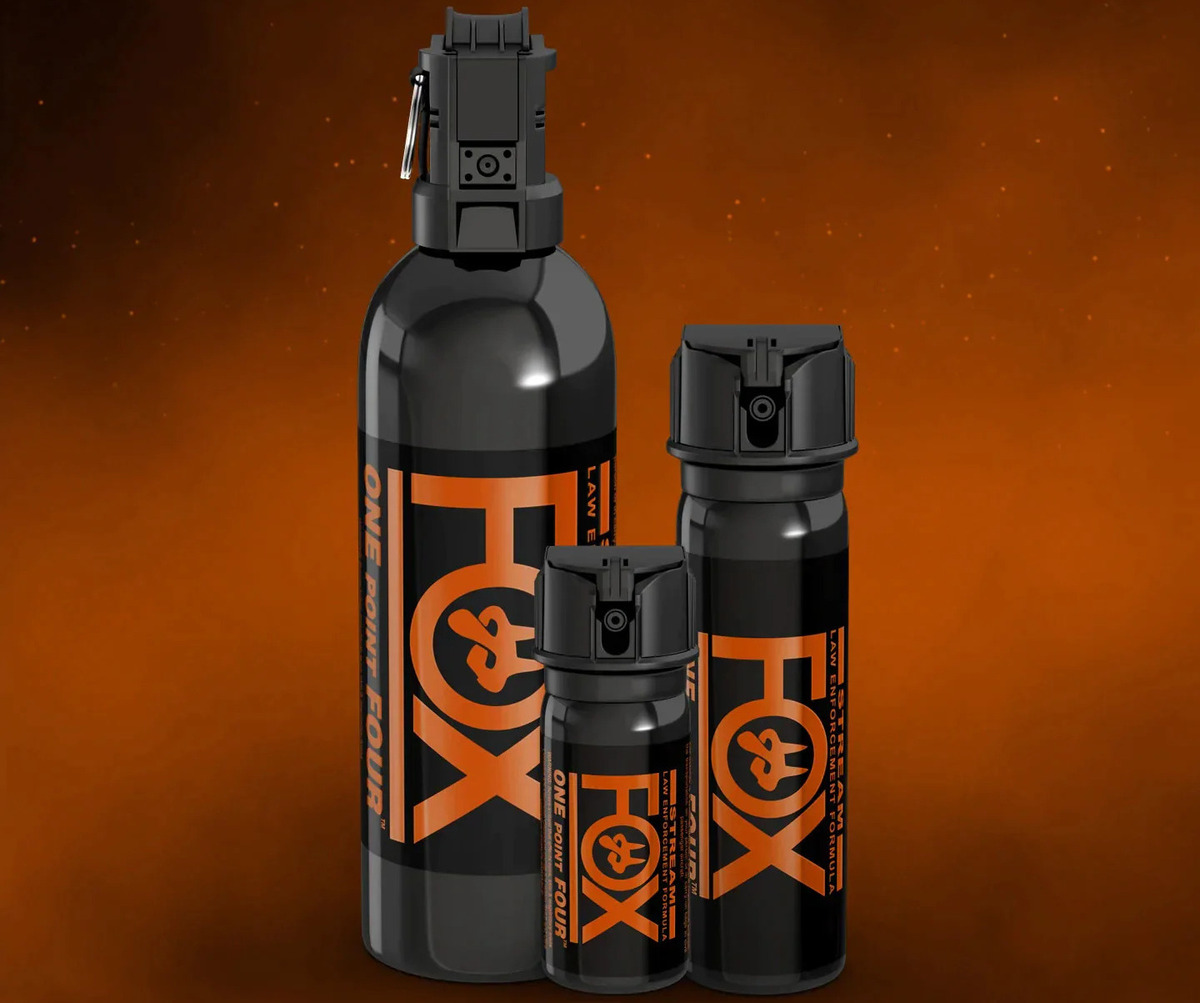Home>Home Security and Surveillance>Which Is Better For Self-Defense: Pepper Spray Or Taser
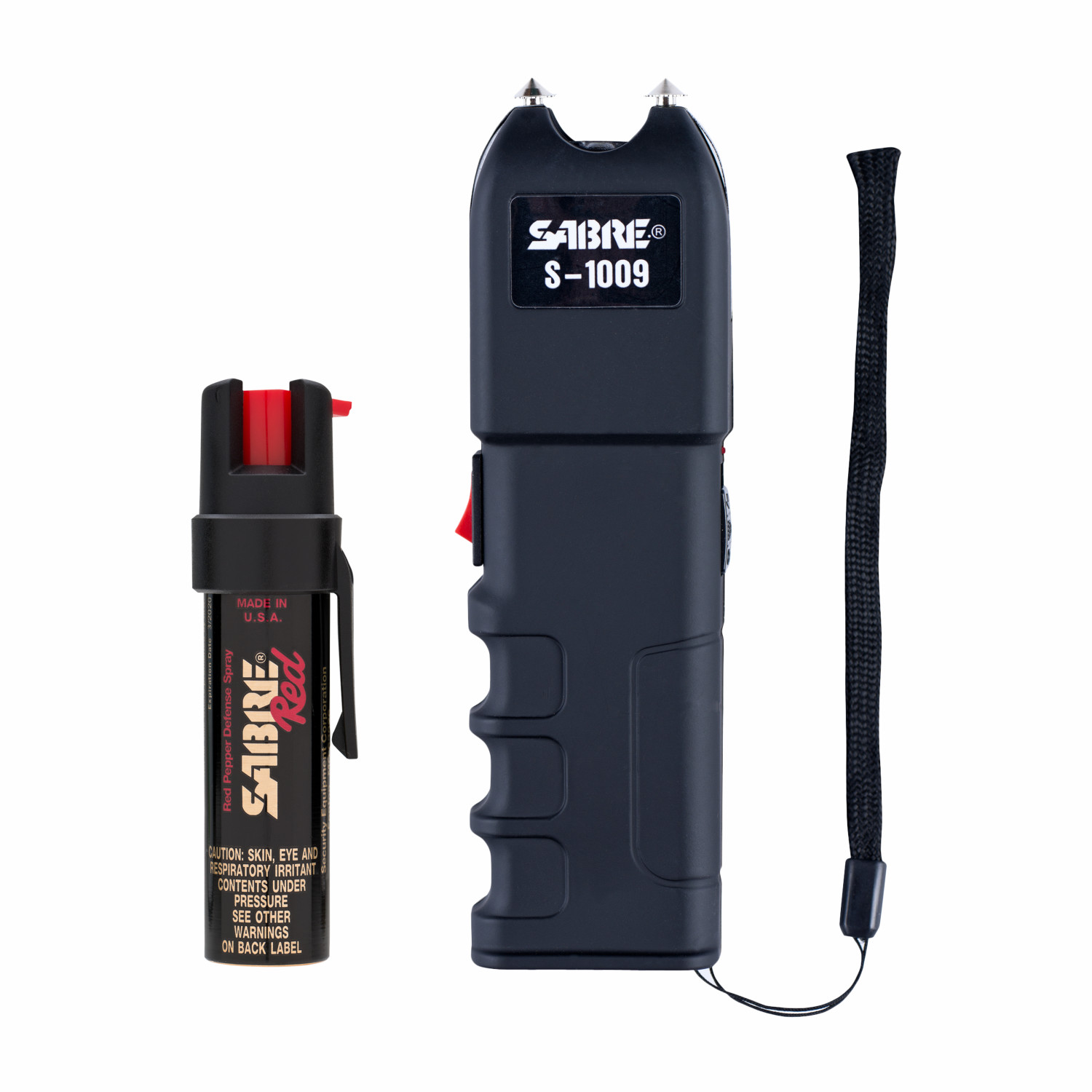

Home Security and Surveillance
Which Is Better For Self-Defense: Pepper Spray Or Taser
Modified: March 6, 2024
Discover the best self-defense options for home security and surveillance. Compare the effectiveness of pepper spray and tasers. Find out which one is right for you.
(Many of the links in this article redirect to a specific reviewed product. Your purchase of these products through affiliate links helps to generate commission for Storables.com, at no extra cost. Learn more)
Introduction
When it comes to personal safety and self-defense, it’s important to have effective tools at your disposal. Two popular options that often come up in the discussion are pepper spray and tasers. Both of these self-defense tools have their own unique features and benefits, but which one is better? In this article, we will delve into the world of pepper spray and tasers, exploring their effectiveness, limitations, and the factors to consider when choosing between them.
Pepper spray, also known as OC spray (Oleoresin Capsicum), is a non-lethal aerosol spray that contains a concentrated form of capsaicin, a chemical found in chili peppers. When sprayed directly into an attacker’s face, it causes immediate and intense inflammation of the eyes, nose, throat, and skin, resulting in temporary blindness, difficulty breathing, and extreme pain.
Tasers, on the other hand, are electronic control devices that deliver a high-voltage electric shock to temporarily incapacitate an attacker. They work by shooting two small electrodes connected to wires, which attach to the attacker’s clothing or penetrate the skin, and then deliver an electric current that disrupts the body’s neuromuscular system, causing muscle contractions and temporary paralysis.
Both pepper spray and tasers have gained popularity due to their effectiveness and ease of use. However, it’s important to evaluate their pros and cons before making a decision on which one to use for personal safety.
In the following sections, we will explore the effectiveness of pepper spray and tasers, examine the factors to consider when choosing between them, and provide a comparative analysis to help you make an informed decision for your self-defense needs.
Key Takeaways:
- Pepper spray and tasers are both effective self-defense tools, but pepper spray offers ease of use, long-range, and affordability, while tasers provide immediate and intense incapacitation from a distance.
- When choosing between pepper spray and tasers, consider legal restrictions, incapacitation duration, user comfort, and maintenance requirements to make an informed decision based on your needs and circumstances.
Read more: Which Is Better: Pepper Spray Or Pepper Gel
Overview of Pepper Spray and Tasers
Before diving into the effectiveness and considerations of pepper spray and tasers, let’s first define these two self-defense tools and explore their history and usage.
Pepper spray, as mentioned earlier, is a non-lethal aerosol spray that contains a concentrated form of capsaicin. It is typically housed in a small canister that can be easily carried in a purse or pocket. When activated by pressing a button or pulling a trigger, a stream, spray, or fog of pepper spray is released, directly targeting an attacker.
Tasers, on the other hand, are electronic control devices that utilize electrical current to incapacitate an attacker. They come in various forms, including handheld devices and stun guns. A taser delivers an electric shock through its electrodes, which can be either fired or handheld-contact style. The electrical current disrupts the body’s neuromuscular system, temporarily disabling the attacker.
The history of pepper spray dates back to ancient times, where it was used as a natural irritant to drive away animals or enemies. In modern times, pepper spray has evolved and become widely used as a self-defense tool, especially for individuals who are uncomfortable or restricted from carrying lethal weapons.
Tasers, on the other hand, have a more recent history. The first taser was developed in the 1960s, but it was not until the late 1990s that it gained popularity as a self-defense tool. Today, tasers are widely used by law enforcement agencies as a less-lethal option to subdue suspects without resorting to firearms.
Both pepper spray and tasers have found application in various fields, including personal security, law enforcement, and even animal control. Their ease of use, portability, and effectiveness make them popular choices for individuals seeking non-lethal self-defense options.
Now that we have a general understanding of pepper spray and tasers, let’s explore their effectiveness and limitations in more detail.
Effectiveness of Pepper Spray
Pepper spray is a widely recognized self-defense tool known for its effectiveness in incapacitating attackers. Let’s take a closer look at how pepper spray works, its advantages and limitations, as well as real-life examples and success stories of its use in self-defense.
When pepper spray is sprayed directly onto an attacker’s face, it causes immediate and intense irritation of the eyes, nose, throat, and skin. The active ingredient, capsaicin, stimulates pain receptors, resulting in temporary blindness, difficulty breathing, and intense pain. This incapacitates the attacker and allows the potential victim to escape or seek help.
One of the primary advantages of using pepper spray is its ease of use. It requires minimal training and can be swiftly deployed in a threatening situation. Pepper spray also has a long-range, allowing users to maintain a distance from the attacker and increase the chances of a successful escape.
Additionally, pepper spray is cost-effective and readily available. It can be easily purchased online or at local stores, making it accessible to a wide range of individuals seeking self-defense options.
However, it is important to acknowledge the limitations of pepper spray. Its effectiveness can be impacted by factors such as wind direction and distance. In outdoor environments, wind can blow the spray back towards the user, affecting their own vision and effectiveness. It is crucial to consider the potential risks and practice proper deployment techniques.
Despite these limitations, pepper spray has proven to be effective in real-life self-defense situations. There are numerous accounts of individuals successfully warding off attackers and escaping harm due to the use of pepper spray.
For example, there have been cases where potential victims, equipped with pepper spray, have successfully deterred assailants during attempted robberies or assaults. The temporary incapacitation caused by pepper spray has provided crucial seconds or minutes for victims to flee or seek help, potentially saving lives in the process.
In one notable case, a college student used pepper spray to fend off an attacker who attempted to assault her. With the spray’s immediate effects, she was able to incapacitate the assailant and escape unharmed. This incident highlights how pepper spray can level the playing field and empower individuals to defend themselves against potential harm.
These real-life examples not only highlight the effectiveness of pepper spray but also underscore the importance of preparedness and personal safety awareness.
As we explore the effectiveness of tasers in the next section, keep in mind the advantages and limitations of pepper spray to make an informed decision on the most suitable self-defense tool for your needs.
Effectiveness of Tasers
Now let’s shift our focus to tasers and explore their effectiveness as a self-defense tool. We will examine how tasers work, their advantages and limitations, and provide real-life examples and success stories of their use in self-defense.
Tasers, also known as electroshock weapons, deliver an electric shock to temporarily incapacitate an attacker. The device works by shooting two small electrodes connected to wires, which attach to the attacker’s clothing or penetrate the skin. Once the electrodes make contact, the taser delivers an electric current that disrupts the body’s neuromuscular system, causing involuntary muscle contractions and temporary paralysis.
One of the key advantages of using a taser is its ability to incapacitate an attacker from a distance. This allows for a greater margin of safety and reduces the risk of close-quarters combat. Furthermore, tasers have been shown to be effective against individuals who are under the influence of drugs or who have a high pain tolerance, making them a reliable option in various scenarios.
Tasers are designed to have a high level of stopping power, providing a significant advantage for the user when faced with a threatening situation. The electric shock is capable of disabling an attacker temporarily, allowing the victim to escape, seek assistance, or gain control of the situation.
However, it is important to consider the limitations of tasers as well. Tasers may not be effective against individuals wearing thick clothing or with multiple layers of insulation, as the electrical current may have difficulty reaching and affecting the attacker’s body. Additionally, tasers require proper aim and accuracy to effectively deliver the electric shock, which may be challenging in high-stress situations.
Despite these limitations, tasers have demonstrated their effectiveness in numerous real-life self-defense scenarios. There have been accounts of individuals successfully using tasers to deter attackers and protect themselves from harm.
For instance, there have been cases where a taser has immobilized an assailant, giving the potential victim valuable time to escape or seek help. In situations where physical strength might not be sufficient to overpower an attacker, the use of a taser can provide a level of defense and personal safety.
In a notable incident, a woman was able to defend herself from an intruder in her home by deploying a taser. The device incapacitated the attacker long enough for her to escape and alert authorities, effectively protecting herself and her property.
These real-life examples serve as testimony to the effectiveness of tasers as a self-defense tool. They highlight the potential impact tasers can have in deterring and incapacitating attackers, allowing individuals to protect themselves in threatening situations.
As we move forward, factors to consider when choosing between pepper spray and tasers will be explored, aiding you in making an informed decision for your self-defense needs.
When considering self-defense options, it’s important to understand that both pepper spray and tasers have their own advantages and limitations. Pepper spray is effective at a distance and can incapacitate an attacker, while a taser delivers an electric shock but requires close proximity. It’s important to consider your comfort level with each option and the laws in your area before making a decision.
Factors to Consider in Choosing Between Pepper Spray and Tasers
When it comes to choosing between pepper spray and tasers for personal self-defense, there are several factors to consider. Understanding these factors will help you make an informed decision based on your specific circumstances. Let’s explore the key factors:
Legal considerations and restrictions: Before purchasing and carrying any self-defense tool, it is crucial to familiarize yourself with the local laws and regulations regarding their use. Some areas may have restrictions or prohibitions on certain types of self-defense tools, including pepper spray or tasers. Be aware of the legal implications and obtain any required permits or licenses if necessary.
Intensity and duration of incapacitation: Consider the effectiveness and duration of incapacitation when comparing pepper spray and tasers. Pepper spray typically incapacitates an attacker temporarily, giving you a window of opportunity to escape. However, the effects can vary depending on the individual and circumstances. Tasers, on the other hand, can provide an immediate and more intense incapacitation by delivering an electric shock. However, it is important to remember that the duration of incapacitation is only temporary, and the attacker may recover after a few seconds or minutes.
Range and accuracy of the self-defense tool: Evaluate the range and accuracy that each self-defense tool offers. Pepper spray can reach a distance of several feet, allowing you to maintain a safe distance from your attacker. Tasers, depending on the model, typically have a range of around 10-20 feet. Consider the distance at which you are most comfortable defending yourself and choose a tool that matches your requirements.
User familiarity and comfort with the tool: Your personal comfort and level of familiarity with a self-defense tool can greatly impact its effectiveness. Some individuals may feel more confident and competent in using pepper spray, while others may prefer the simplicity and ease of use of a taser. Choose a tool that aligns with your comfort level and one that you can confidently handle in a high-stress situation.
Cost and availability of pepper spray and tasers: Consider the cost and availability of both pepper spray and tasers. The prices for these self-defense tools can vary significantly based on factors such as brand, features, and quality. Research and compare the cost and availability of each option to find the most suitable one within your budget.
It is essential to weigh these factors carefully and consider your own personal preferences and circumstances before deciding between pepper spray and tasers for self-defense. The choice will ultimately come down to what you find most effective, convenient, and legally viable for your specific needs and comfort level.
Read more: What Hurts More: Taser Or Pepper Spray
Comparative Analysis of Pepper Spray and Tasers
When comparing pepper spray and tasers as self-defense tools, it is important to consider several factors to determine which option suits your needs best. Let’s analyze the key aspects of both pepper spray and tasers:
Impact on attacker and potential implications: Pepper spray causes immediate irritation, pain, and temporary incapacitation by affecting an attacker’s eyes, nose, throat, and skin. This can give you an opportunity to escape or seek help. Tasers, on the other hand, deliver an electric shock that disrupts the neuromuscular system, resulting in muscle contractions and temporary paralysis. The impact of a taser can be more intense and immediate, potentially providing a higher level of incapacitation.
Side effects and risks: While both pepper spray and tasers are generally considered non-lethal self-defense tools, they do come with potential side effects and risks. Pepper spray can inadvertently affect the user, causing temporary discomfort and impaired vision if the wind blows the spray back. Tasers, when used inappropriately or on individuals with certain medical conditions, may cause injuries such as muscle strains, falls, or in rare cases, cardiac complications. It is crucial to understand and be knowledgeable about the potential risks associated with both options.
Ease of use and application: Pepper spray is relatively easy to use and requires minimal training. Most pepper spray canisters have a simple trigger or button mechanism for activation. Tasers, although straightforward, may require more training and practice to ensure proper deployment and accuracy, especially in high-stress situations. Consider your comfort level with each option and choose the one that you feel confident and competent in using.
Maintenance and storage requirements: Pepper spray typically requires minimal maintenance and has a long shelf life. It is important to periodically check the expiration date and ensure the canister is stored in a cool, dry place. Tasers, on the other hand, usually require more regular maintenance, including ensuring the device is charged, testing and replacing batteries, and keeping the electrodes clean. Consider the level of maintenance and storage requirements that you are willing to commit to for each option.
Ultimately, the choice between pepper spray and tasers depends on your personal preferences, comfort level, and specific needs. Both options can be effective in self-defense situations, but it is essential to carefully consider the impact on the attacker, potential implications, side effects and risks, ease of use, and maintenance requirements. Taking these factors into account will help you make an informed decision and choose the self-defense tool that aligns best with your individual circumstances and priorities.
Conclusion
In the realm of self-defense, both pepper spray and tasers are popular tools that offer individuals a means of protection. After examining the key aspects and considerations of both options, let’s summarize the key points discussed and provide final thoughts on choosing between pepper spray and tasers for self-defense.
Pepper spray, with its active ingredient capsaicin, works by causing temporary inflammation and incapacitation of an attacker. It offers advantages such as ease of use, long-range, and affordability. Real-life examples have demonstrated its effectiveness in deterring potential assailants and providing individuals with an opportunity to escape or seek help.
Tasers, on the other hand, deliver an electric shock that disrupts the attacker’s neuromuscular system, resulting in temporary paralysis. Their advantages include immediate and intense incapacitation, suitability for individuals with high pain tolerance or under the influence of drugs, and the ability to incapacitate from a distance.
When deciding between pepper spray and tasers, several factors come into play. Legal considerations and restrictions must be taken into account, along with the intensity and duration of incapacitation provided by each tool. Range and accuracy, user familiarity, and comfort, as well as the cost and availability, are also crucial factors to consider in the decision-making process.
It is worth noting that pepper spray and tasers have potential implications, including side effects and risks. Wind direction can affect the effectiveness of pepper spray, and tasers may pose a risk if used inappropriately or on individuals with certain medical conditions.
Maintenance and storage requirements are also a factor to consider. Pepper spray generally requires minimal maintenance, while tasers may need regular charging, battery replacement, and electrode cleaning.
To make an informed decision, reflect on your own personal preferences and circumstances. Consider your comfort level, the level of training you are willing to undertake, and your willingness to commit to maintenance and storage requirements.
Ultimately, the choice between pepper spray and tasers is a personal one. Both can be effective in providing self-defense, and the decision rests on what aligns best with your needs, comfort, and familiarity.
Remember, self-defense is a multifaceted approach that goes beyond just the tool you choose. It is also essential to develop situational awareness, practice assertiveness, and consider self-defense training to enhance your overall safety and well-being.
By weighing the considerations and making an informed decision, you can equip yourself with a self-defense tool that provides a sense of security and confidence.
Frequently Asked Questions about Which Is Better For Self-Defense: Pepper Spray Or Taser
Was this page helpful?
At Storables.com, we guarantee accurate and reliable information. Our content, validated by Expert Board Contributors, is crafted following stringent Editorial Policies. We're committed to providing you with well-researched, expert-backed insights for all your informational needs.
